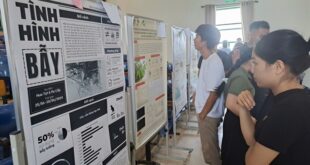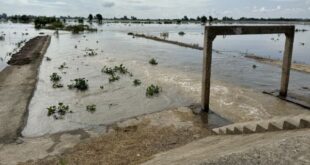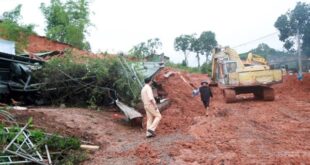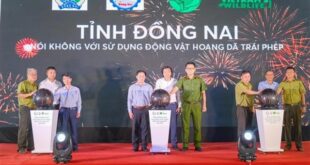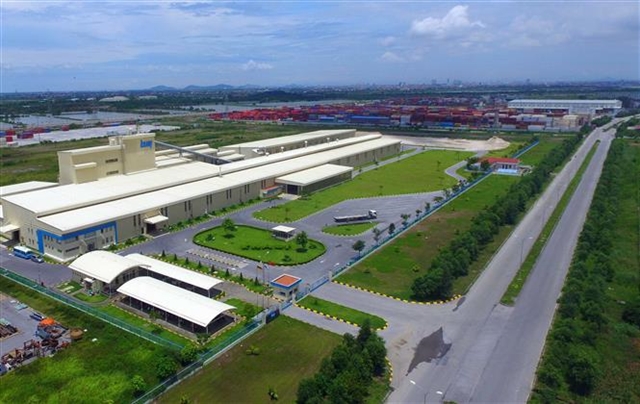
HÀ NỘI — Experts from UNIDO and Việt Nam shared their knowledge to evaluate the eco-industrial park model according to the international framework, at a recent online workshop.
The two-day workshop was co-held by the Eco-Industrial Park Project Management Board in Việt Nam, and the Ministry of Planning and Investment in collaboration with the Việt Nam Cleaner Production Centre between January 13 and 14.
The workshop is part of the project “Eco-industrial parks intervention in Việt Nam – Perspective from the Global Eco-Industrial Park Programme” co-operated by the ministry and the United Nations Industrial Development Organization (UNIDO) with funding from the Swiss Federal Economic Agency (SECO).
The project is designed to promote activities to support the industrial parks in participating in the project to identify opportunities for eco-industrial parks, to bring environmental and economic benefits to businesses through a series of training activities to strengthen capacity in resource efficiency in cleaner production (RECP) and industrial symbiosis.

Lê Thành Quân, Project Director
Speaking at the workshop, Lê Thành Quân, director of the ministry’s Department of Economic Zones Management, said the eco-industrial park model could play a positive role with the national sustainable development strategy only when it is replicated across the country, with different support in policy, technology, finance, information and close connection among stakeholders.
Đinh Mạnh Thắng, an expert from the Việt Nam Cleaner Production Centre, said every industry in any size and sector could increase production efficiency through systematic methods.
Increasing resource efficiency at businesses would provide significant social and economic benefits, not simply environmental benefits, he said.
Building and managing a database for production and consumption of raw materials, energy, water and substances continuously and systematically would be an important and decisive basis for the successful execution of RECP, he said.
This was an important strategy to help businesses achieve their green growth goals and progress to sustainable development, he added.
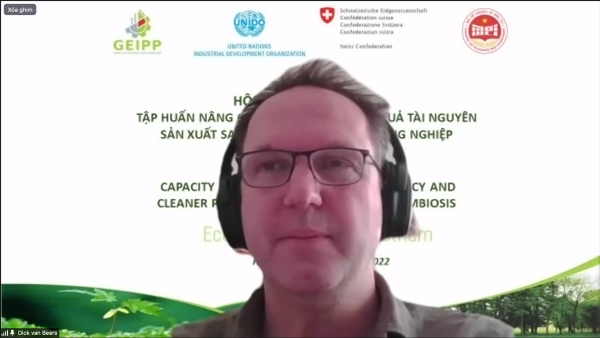
Dick van Beers, an expert on eco-industrial parks from UNIDO, said industrial symbiosis was the cooperation between several different facilities.
Such facilities are often geographically close to each other, such as companies and factories in clusters or industrial zones that exchange resources (for example, materials, energy, water and by-products) that can be used as substitutes for products or raw materials that would otherwise be imported from elsewhere or treated as waste.
He also cited examples of industrial symbiosis in some eco-industrial parks around the world.
For example, Kalundborg Industrial Park (Denmark), after applying industrial symbiosis, has reduced energy use, CO2 emissions by up to about 250,000 tonnes a year, water use by 30 per cent and other wastes.
NISP Industrial Park (UK), in seven years, has saved GBP1.3 billion (US$1.77 billion), with additional sales increasing by 1.3 billion pounds, and at the same time reduced up to 39 million tons of CO2.
At the workshop, participants also discussed how to manage eco-industrial parks and provide services for businesses in the eco-industrial parks, key concepts, methods and tools in identifying and implementing RECP, as well as industrial symbiosis. — VnExpress News
- Reduce Hair Loss with PURA D’OR Gold Label Shampoo
- Castor Oil Has Made a “Huge” Difference With Hair and Brow Growth
- Excessive hair loss in men: Signs of illness that cannot be subjective
- Dịch Vụ SEO Website ở Los Angeles, CA: đưa trang web doanh nghiệp bạn lên top Google
- Nails Salon Sierra Madre
 VnExpress News The News Gateway of Vietnam
VnExpress News The News Gateway of Vietnam
